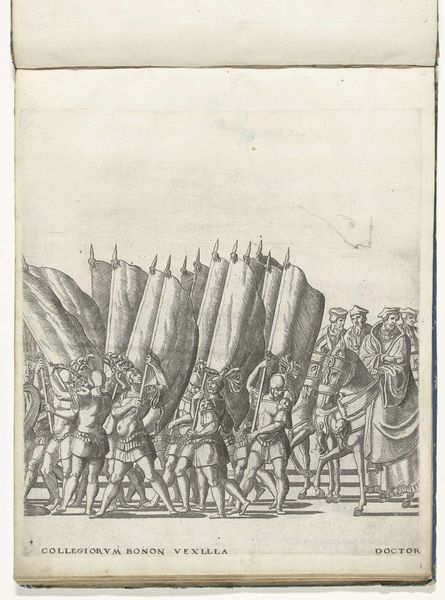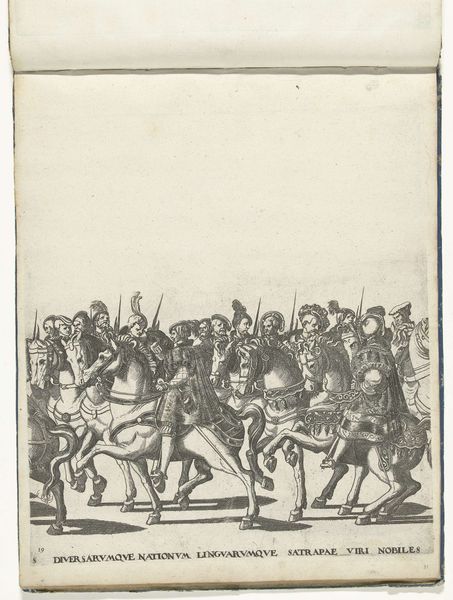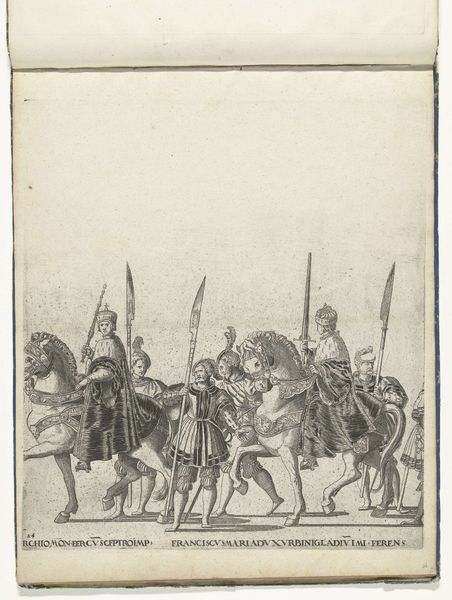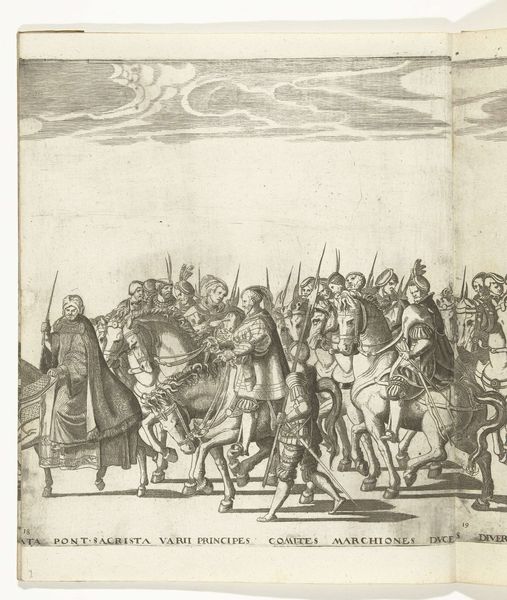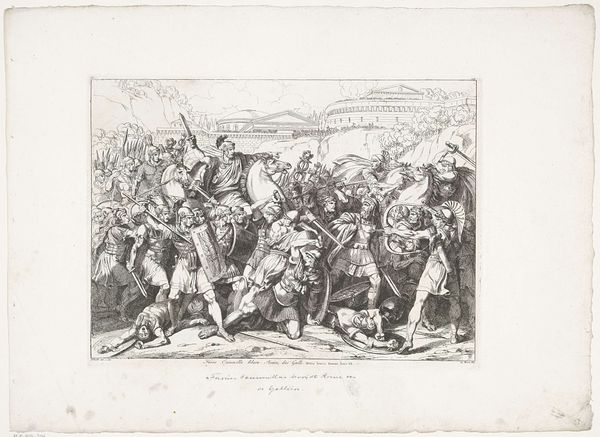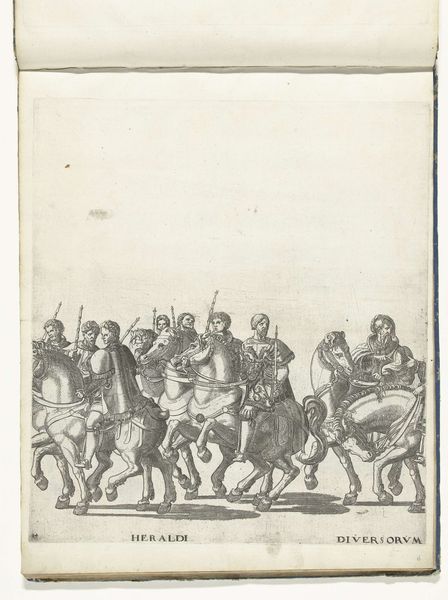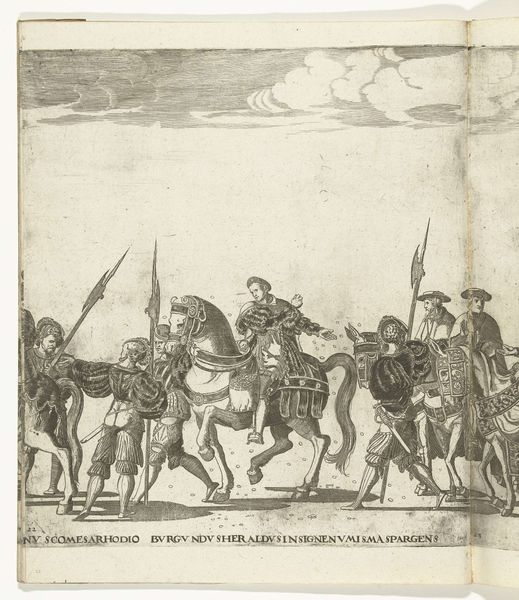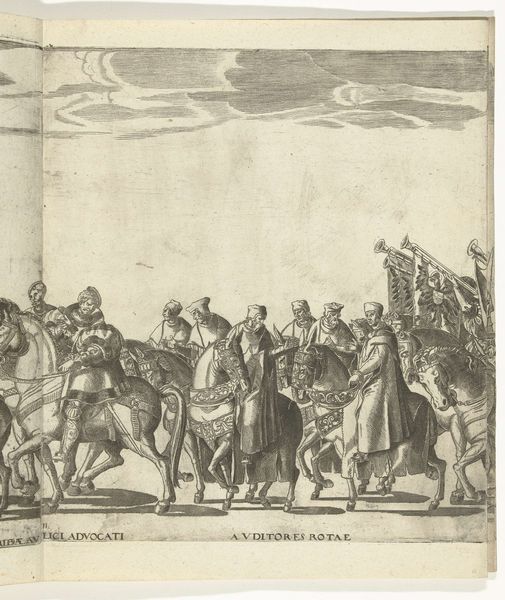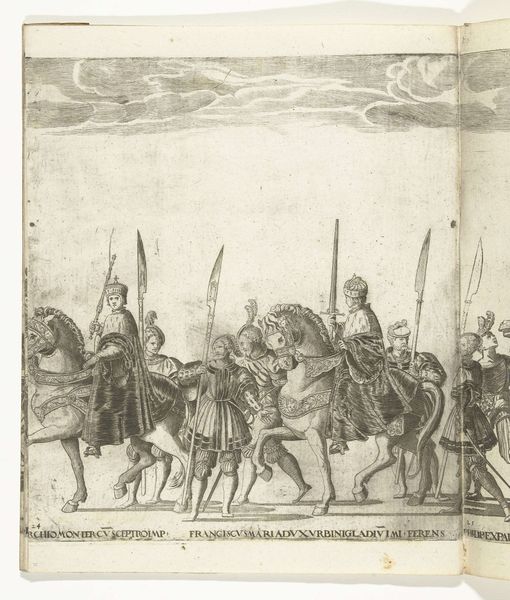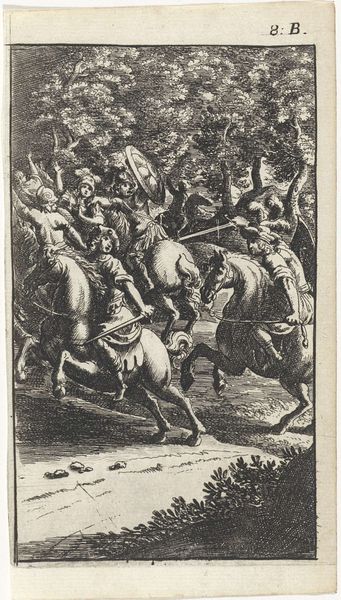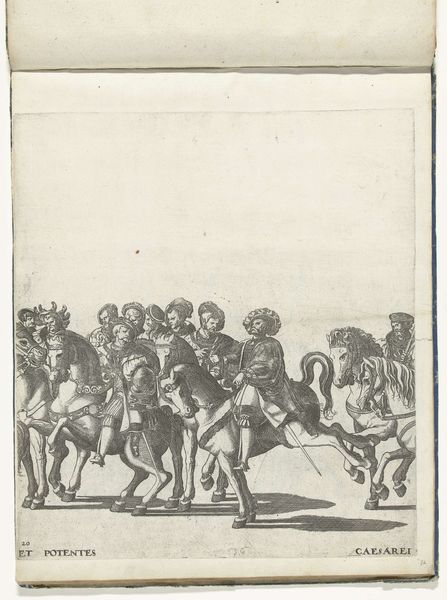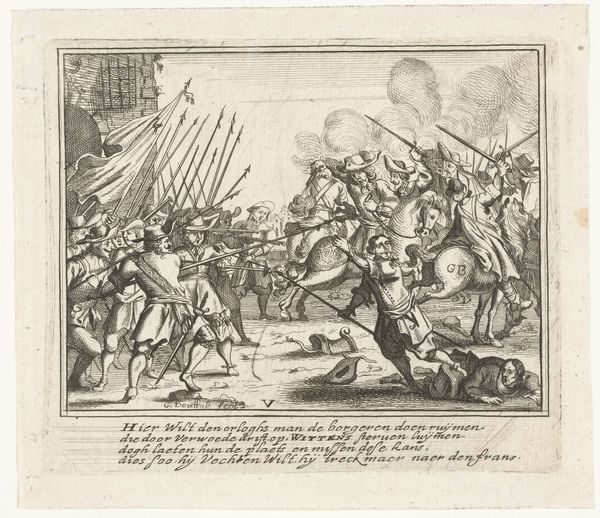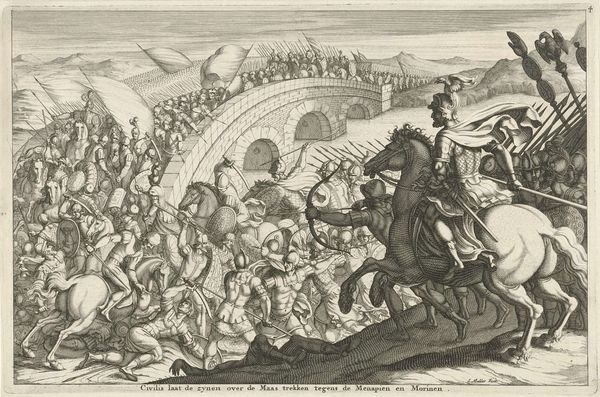
drawing, print, ink, engraving
#
drawing
#
light pencil work
#
ink drawing
#
narrative-art
# print
#
pen sketch
#
pencil sketch
#
figuration
#
11_renaissance
#
personal sketchbook
#
ink
#
ink drawing experimentation
#
pen-ink sketch
#
pen work
#
sketchbook drawing
#
northern-renaissance
#
sketchbook art
#
engraving
Dimensions: height 330 mm, width 300 mm
Copyright: Rijks Museum: Open Domain
Curator: We are looking at "Bazuinen, plaat 12" by Nicolaas Hogenberg, dating from approximately 1530 to 1620. It's an engraving, one of a series, likely a print. Editor: It's all sharp angles and shining armour, isn't it? And a mass of trumpets pointing skyward! There's an urgency in the composition, as though these riders are rushing headlong towards a proclamation or a battle. Curator: Precisely. Hogenberg was very active during a turbulent period in European history, a time defined by religious reformation, shifting political alliances and the ever-present threat of conflict. Series like this would've played a key role in visually communicating power dynamics and military prowess to a wide audience. Think of this as a carefully constructed display of force meant for public consumption. Editor: Look at those trumpets. The "tubicines" aren't merely musical instruments; they are tools of announcement and control, resonating with royal or divine decrees, and summoning collective emotion and action. What does the image suggest about who they are and what role they serve? The instruments bear wings that appear angelic. Is this a secular or religious matter? Curator: This piece resonates strongly with the Northern Renaissance style, where detail was paramount and served a symbolic as well as an aesthetic purpose. The work’s potential meaning is expanded by this period when social hierarchies, heavily reliant on visible status symbols, would find engravings a reliable tool of disseminating clear messages of order. Consider, also, how Hogenberg was based in locations pivotal to both religious and political upheavals of his time. Editor: These equestrian figures, almost like Roman gods in triumphal procession, stir an image of both conquest and the declaration of something new. Given the presence of heavenly wings and musical symbolism, I get a palpable sense of the fusion of military strength and divinely-ordained rule, whether that rule is secular or sectarian is vague. It leaves me contemplating the potent impact that calculated imagery wielded during that volatile era. Curator: It certainly encourages reflection on the interweaving of art, power, and propaganda in a formative period. Editor: Indeed. I will contemplate this artist more now and will associate the visual messages from my experiences today.
Comments
No comments
Be the first to comment and join the conversation on the ultimate creative platform.
